Ebook's content
Field stripping the Mauser C96
- The first four stripping steps
- The takedown latch is of paramount importance
- Dismounting the firing pin in very early models
- The bolt retainer
Advanced
dismounting the Mauser C96
- The extractor
- The rear sight blade and latch
- Magazine floorplate plunger and trigger
- Dismounting the lock sub-frame
- Hammer and safety lever
- Sear actuator and sear spring
- Mainspring plunger and rocker coupling
- Mainspring and guides
- When replacing the rocker coupling (tip 1)
- To assemble the barrel group (tip 2)
- To reassemble the action frame and the barrel group (tip 3)
Technical
description of the Mauser C96
- The Mauser C96 pistol consists of four main parts
- The barrel and extension
- The magazine well
- When the bolt is drawn rearwards with a empty magazine
- The rear and front sight
- The bolt stop
- The barrel extension
- The bolt
- The receiver
- The lock sub-frame
Operation of
the Mauser C96
- A "prop-up" type of locking
- Close-up animated sequence
- Full size animated sequence
- Hammer and sear relation
- Disconnecting work of the forward mainspring plunger
- Locking and unlocking of the bolt
- The bolt's rear travel
- Disconnection in early models
- The ejector
The safety of the Mauser
C96
- Long type safety lever on early models
- Late safety of the first type
- Late safety of the second type or "NS" safety
- Hammer-operated safety lever
- Universal safety
- Model 1902 safety prototype
Prototypes and pre-production
Models
- A working prototype materialized by the summer of 1894
- German patent (No. 90430)
- Six-shot and a twenty-shot model
- The final stage for mass production
- The spur hammer replaced by a "Cone Hammer"
- The twenty-shot
version
- An experimental 6 mm
cartridge
- 1896 prototype of a
ten-shot carbine
Mauser C96 early Models
- Last minute changes before the mass production launch
- Introduction of the two locking lugs
- Improvement of the lock sub-frame
- The mainspring front plunger
- Minor changes
- From about the serial number 360 onward
Mauser C96 "Cone
Hammer" variations
- Modification of the barrel extension
- Cone Hammer 10-shot variations described
- The left rear milled out side panel modified
- Cone Hammer 6-shot variations described
- Cone Hammer 20-shot variations described
- Cone Hammer resold by Westley Richards
- Rear sight with a peep type aperture
Mauser C96 "Large ring
Hammer" variations
- At about serial number 15,000, the "Flat side" variation
- Italian Navy contract
- Modification of the trigger and rear sight
- firing
pin with a single locking lug
- The
"shallow-milled" panel variation
- Large
ring "Bolo" 10-shot
- The "Bolo" variation
- The new two-lug firing pin
- Large ring 6-shot "Officer Model"
Mauser C96 "Small ring
Hammer" variations
- Small ring Hammer 10-shot
- The improved "NS" safety
- Shorter extractor
- Modification of
the barrel extension
- The barrel rifling was changed
- The Mauser banner trademark
- The 9 mm Export
- The "Red Nine" variation
- Small ring Hammer 6-shot
- The reinforced chamber
Post-War 1920 Reworks and 1930
Model
- 1920 Rework 10-shot
- Under the new German Republic of Weimar
- Mauser pistols out of Germany
- French Gendarmerie
- The long barreled "Bolo"
- Post War regular 10-shot production
- Post War special and experimental models
- Early 1930 models
- The new "Universal Safety"
- 1930 model (711) with the frame for the selective fire model
The "Schnellfeuer" Model
- A selective fire carbine
prototype
- Joseph Nickl model
- Karl Westinger model
- Technical description of the Westinger model
- Dismounting the Westinger model
How the Mauser C96 "Schnellfeuer" works
- The lock frame of the
"Schnellfeuer"
- How act the selecting-fire lever
- The second sear
- The articulated member of the trigger
- A specific area was milled out in the barrel extension
- To render the full automatic option inoperative for ever
MAUSER - Historic details
- The Mauser legacy
- Paul and Wilhelm Mauser
- The Mauser's
bolt action rifle
- The Oberndorf Mauser factory
- The Mauser
zigzag revolver
- "Waffenfabrik Mauser A.G" a Ludwig Loewe asset
- Mauser semi-auto pistols (C96, Model 1914, Hsc)
Bibliography and Resources
Ebook screen prints
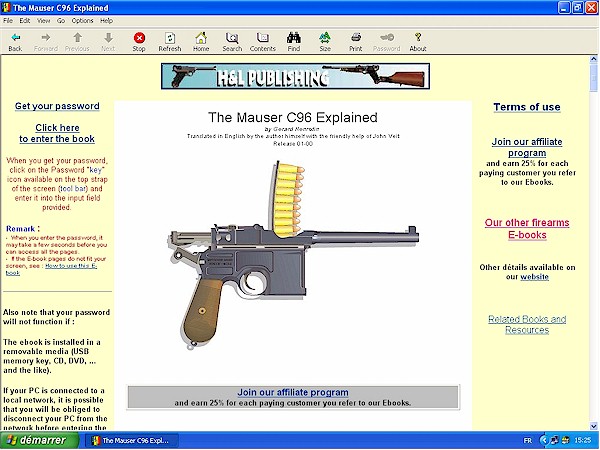
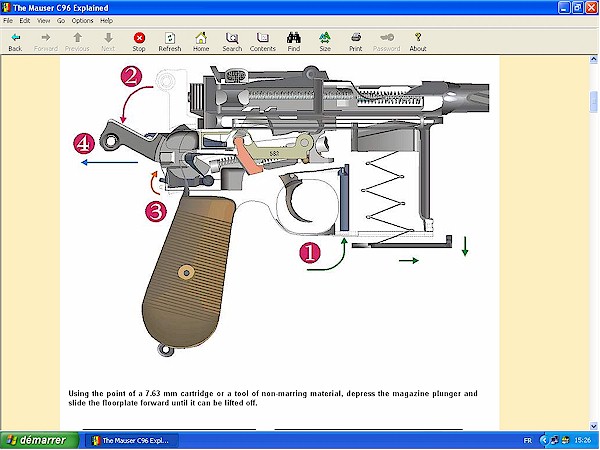
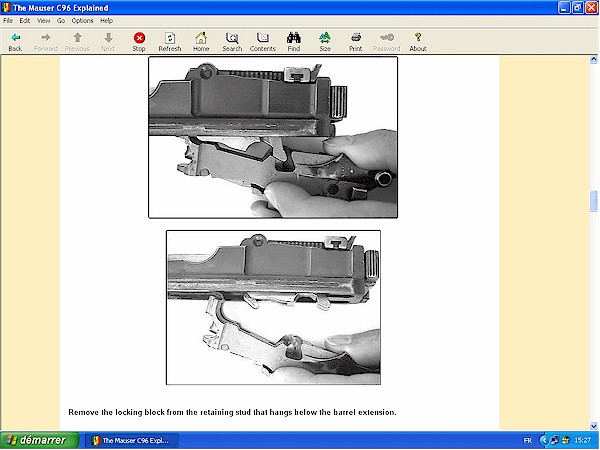
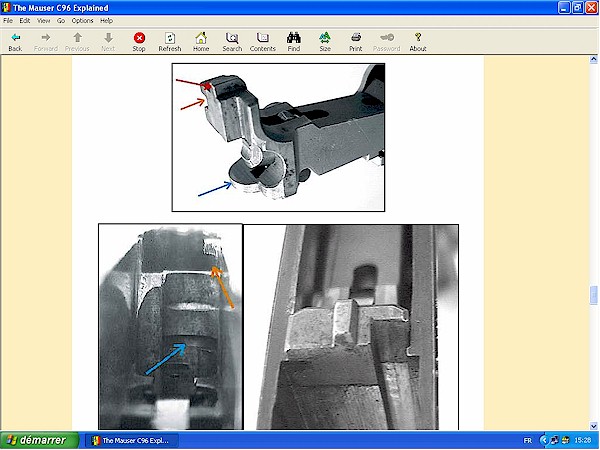
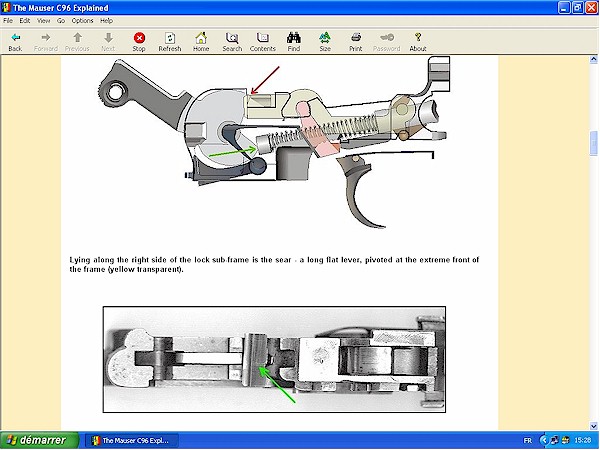
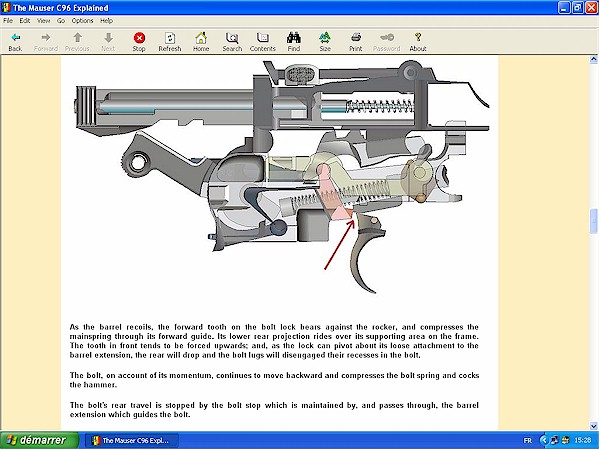
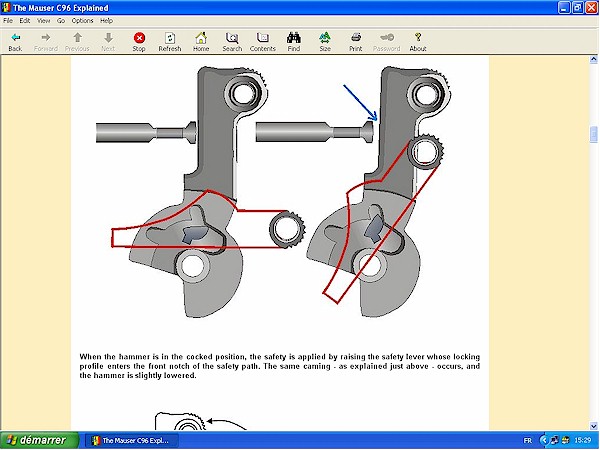
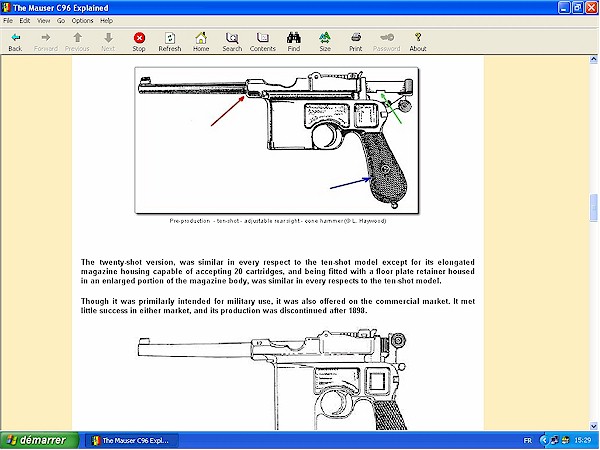
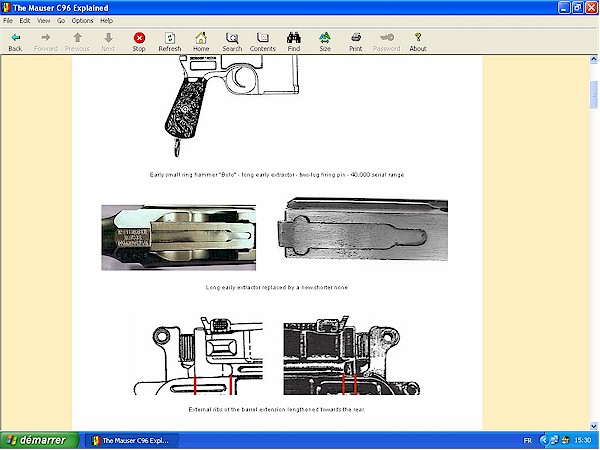
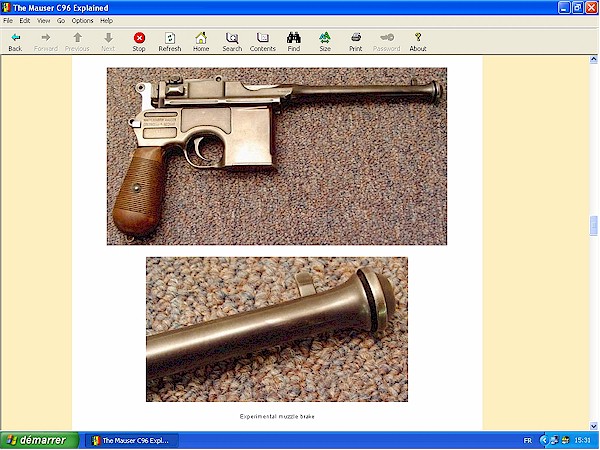
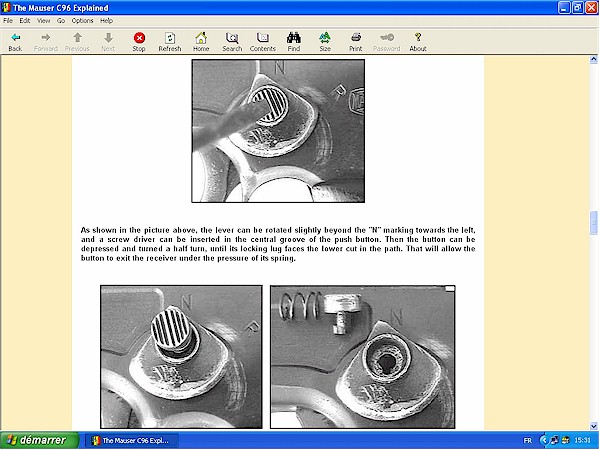
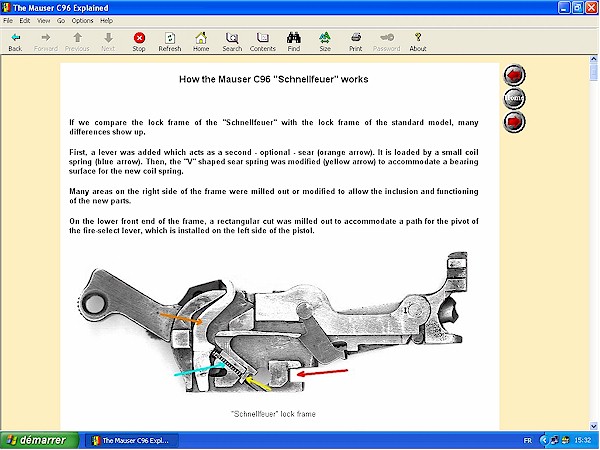
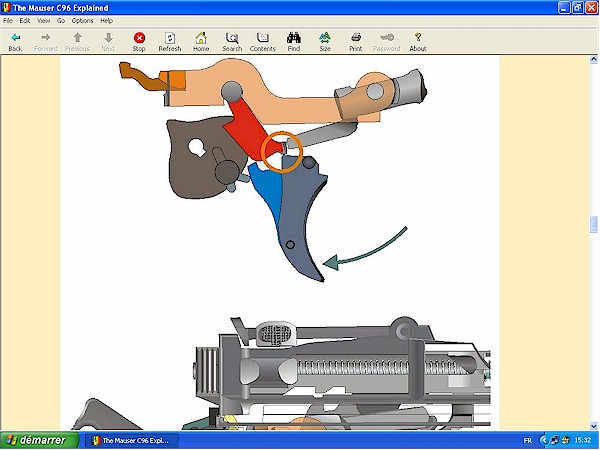
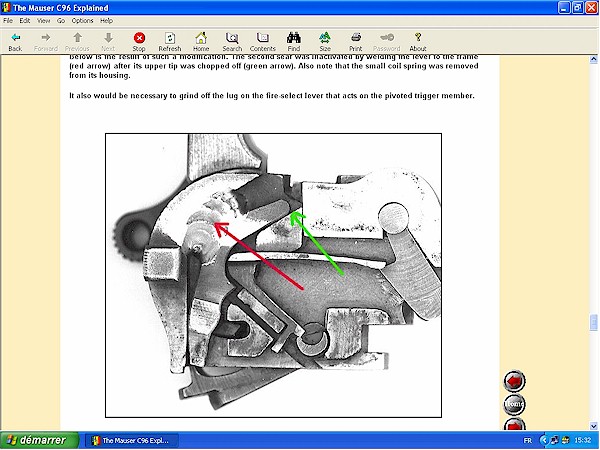
|



